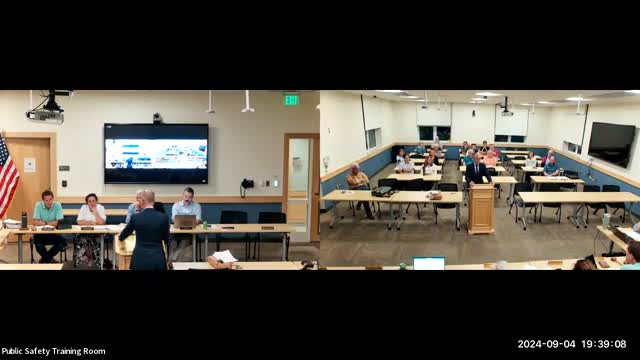Tensions Rise Over Controversial Development Project
September 05, 2024 | Town of Southborough, Worcester County, Massachusetts
This article was created by AI summarizing key points discussed. AI makes mistakes, so for full details and context, please refer to the video of the full meeting. Please report any errors so we can fix them. Report an error »

In a recent government meeting, officials discussed ongoing litigation and community concerns surrounding a contentious development project. The dialogue highlighted the complexities of the situation, particularly the need for cohesive communication among stakeholders, including local residents and developers.
One key point raised was the importance of maintaining open lines of communication with the defendants involved in the project. Officials expressed a desire to hear from a majority of these parties to facilitate discussions and potentially reach a settlement. However, there was a palpable frustration regarding the lack of cooperation from some stakeholders, which has hindered progress.
Concerns were voiced about the proposed access routes for the development, particularly regarding the impact on local neighborhoods. Several officials noted that the community's preference is to avoid routing traffic through residential areas, emphasizing that previous plans included only emergency access. The sentiment among board members was clear: they are reluctant to approve any plans that do not align with community interests.
The discussion also touched on the legal implications of the ongoing litigation. Officials debated the potential outcomes if the application were denied, including the possibility of the case being taken over by the Housing Appeals Committee. There was a consensus that the board should not be thrust into a position of conflict, especially when a clear agreement with local residents has already been established.
As the meeting progressed, it became evident that the board is grappling with the balance between legal obligations and community needs. The frustration over the drawn-out process was palpable, with officials expressing a desire to expedite the hearing and alleviate the stress on residents. The planning board's support for not continuing the hearing further underscored the community's stance against the proposed project.
In conclusion, the meeting underscored the challenges of navigating development projects within established legal frameworks while addressing community concerns. The board's commitment to transparency and collaboration remains strong, but the path forward will require significant cooperation from all parties involved.
One key point raised was the importance of maintaining open lines of communication with the defendants involved in the project. Officials expressed a desire to hear from a majority of these parties to facilitate discussions and potentially reach a settlement. However, there was a palpable frustration regarding the lack of cooperation from some stakeholders, which has hindered progress.
Concerns were voiced about the proposed access routes for the development, particularly regarding the impact on local neighborhoods. Several officials noted that the community's preference is to avoid routing traffic through residential areas, emphasizing that previous plans included only emergency access. The sentiment among board members was clear: they are reluctant to approve any plans that do not align with community interests.
The discussion also touched on the legal implications of the ongoing litigation. Officials debated the potential outcomes if the application were denied, including the possibility of the case being taken over by the Housing Appeals Committee. There was a consensus that the board should not be thrust into a position of conflict, especially when a clear agreement with local residents has already been established.
As the meeting progressed, it became evident that the board is grappling with the balance between legal obligations and community needs. The frustration over the drawn-out process was palpable, with officials expressing a desire to expedite the hearing and alleviate the stress on residents. The planning board's support for not continuing the hearing further underscored the community's stance against the proposed project.
In conclusion, the meeting underscored the challenges of navigating development projects within established legal frameworks while addressing community concerns. The board's commitment to transparency and collaboration remains strong, but the path forward will require significant cooperation from all parties involved.
View full meeting
This article is based on a recent meeting—watch the full video and explore the complete transcript for deeper insights into the discussion.
View full meeting
